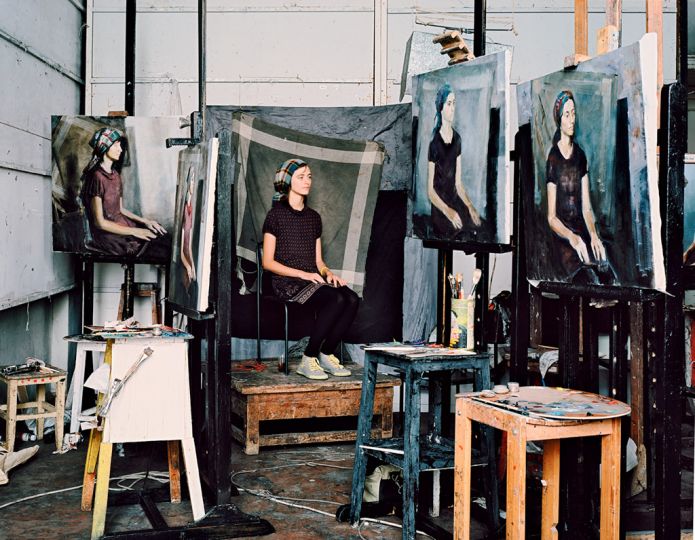Winner of the 2012 HSBC Photography Prize alongside Eric Pillot, Leonora Hamill has also developed video work about the question of emotional identity. Her deliberately refined visual language – absence of camera movement, long takes, on-location sound bites, minimal narration – contribute to her study of the restrictions created by body language. In her first four works, “The Second Eve”, “Attack”, “I was much too far out all my life” and “The Seventh Nerve”, simple and ambiguous scenes feature a professional actress in settings often inspired by paintings. In these four 6-minute videos, the abstract narration puzzles spectators. “The Second Eve” shows a young woman whose breathing accelerates, becoming deeper, provoking a variety of facial expressions. A disturbing birthing scene that confuses the spectator, tempted to believe she might be masturbating. “Attack” also toys with an ambivalence provoked by the difference between sound and image. Imitating a panic attack, the actress alternates between calm and anxiety, depending on her psychological state. Here, only the sound is ambiguous, the image shows a woman kneeling, clearly devastated by a psychological pain whose intensity becomes physical, the lines of her pale body seem to rip through the intense black background at each movement. Here, like in “The Seventh Nerve”, Leonora Hamill challenges spectators by confronting them with a painful emotion and the potential empathy it creates during a time when violence is generalized by the medias and cinema inhibits any response. She also highlights, in these two works as in “I was much too far out all my life”, how the context generates the reaction. A result of the narration, context is a key element in the moving image, absent from photography, from which she tries to liberate video. A phrase borrowed from the Stevie Smith poem “Not waving but drowning”, “I was much too far out all my life” observes a young woman floating in the water who slowly becomes agitated, disappearing from the frame as if absorbed by the vastness, reappearing, flustering, in an increasing state of panic. Six minutes later she is resting on her belly, pale and sundrenched in a green bed. Anxiety no longer quivering through her muscles. Contrary to Rimbaud’s soldier, she does not bear two red holes on her right side. Is she dead, or at peace? The question remains. The artist comments that as a child, it was her favorite position.
This article is reserved for subscribed members only. If you are already a member, you can log in here below.
Subscribe for full access to The Eye of Photography archives!
That’s thousands of images and articles, documenting the history of the medium of photography and its evolution during the last decade, through a unique daily journal. Explore how photography, as an art and as a social phenomenon, continue to define our experience of the world. Two offers are available.
Subscribe either monthly for 8 euros (€) or annually for 79 euros (€) (2 months offered).
















